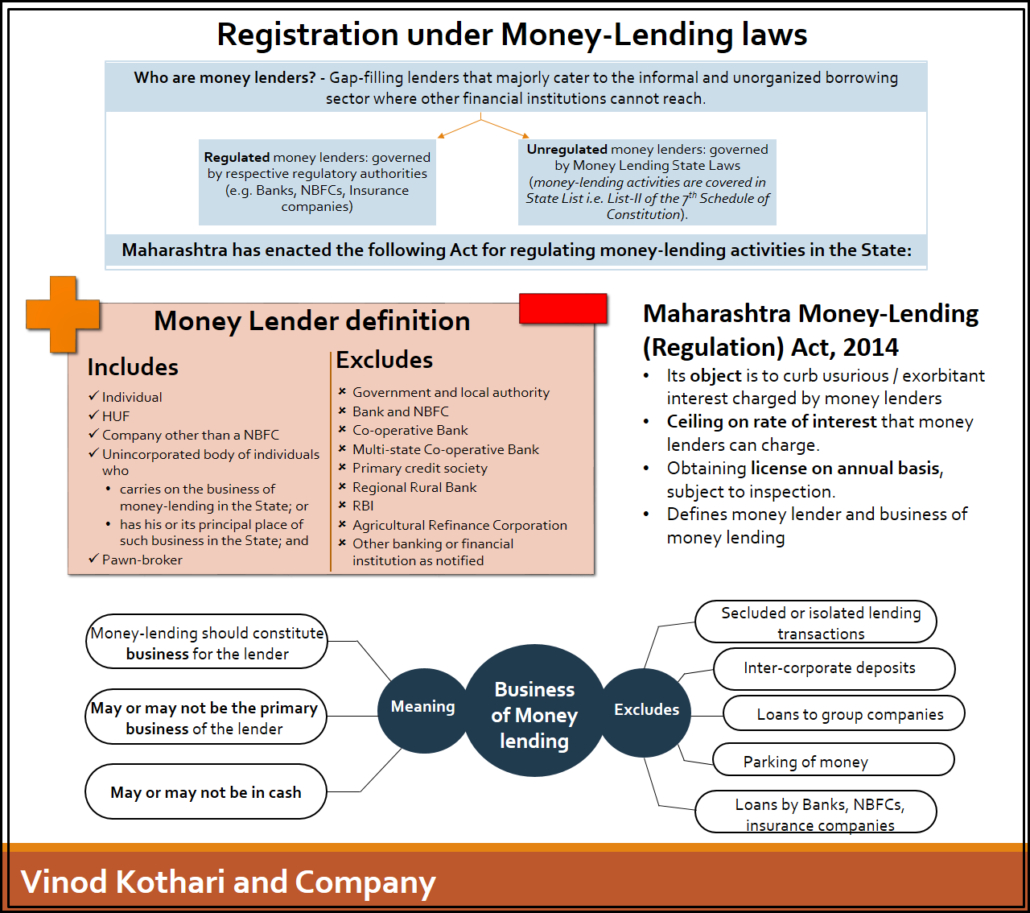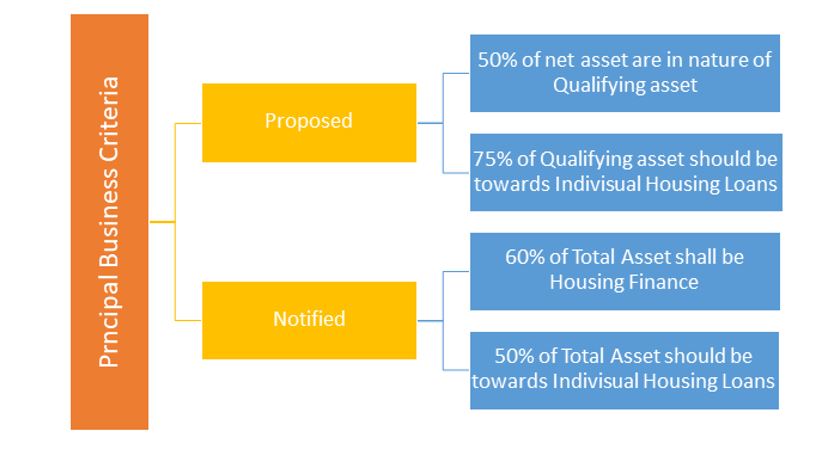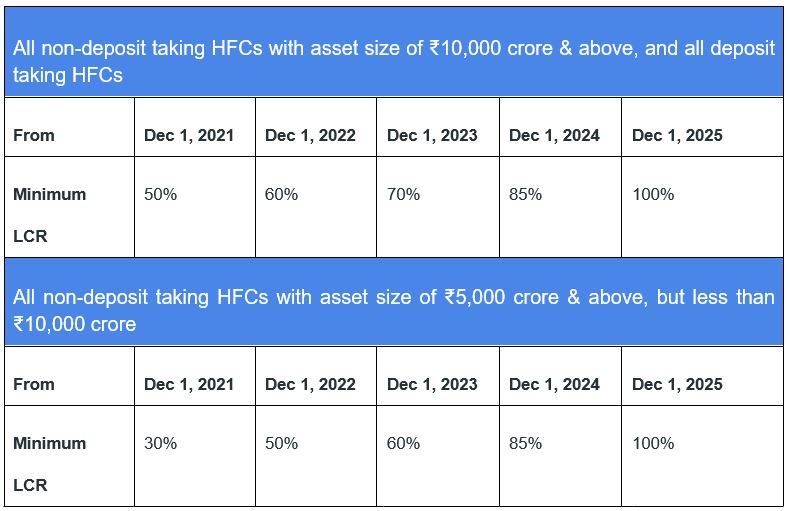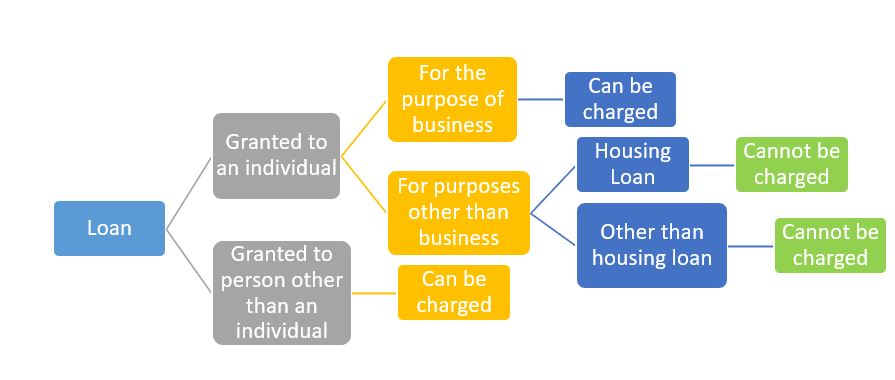-Aanchal Kaur Nagpal (aanchal@vinodkothari.com)
Introduction
The disruption throughout the globe due to the COVID-19 pandemic has hit the Indian economy as well significantly. The financial sector has experienced a massive blow due to the impact of the pandemic on the credit worthiness and repayment capacity of the overall general public. RBI has responded through various measures including allowing moratorium period, providing resolution framework for stressed accounts due to COVID-19 and numerous other measures.
The retail borrower segment of several banks and NBFCs has also been adversely affected by the disruption and hence, the lenders are contemplating ways to extend certain benefits to such borrowers them under the various circulars issued by the RBI and government. In this regard, restructuring or modification in terms of a loan is being done for economic or legal reasons, relating to the borrower’s financial difficulty. However, such restructuring may also have implications on the books of accounts, especially for IndAS compliant entities.
The following note discusses the meaning of ‘restructuring’ and it impact on the credit risk of the borrower.
Meaning of Restructuring
As per RBI norms on Restructuring of Advances by NBFC, A restructured account is one where the NBFC, for economic or legal reasons relating to the borrower’s financial difficulty, grants to the borrower concessions that the NBFC would not otherwise consider.
As per the Basel guidelines on prudential treatment of problem assets –definitions of nonperforming exposures and forbearance, definition of forbearance is as follows:
4.1. Identification of forbearance
- Forbearance occurs when:
- a counterparty is experiencing financial difficulty in meeting its financial commitments; and
- a bank grants a concession that it would not otherwise consider, irrespective of whether the concession is at the discretion of the bank and/or the counterparty. A concession is at the discretion of the counterparty (debtor) when the initial contract allows the counterparty (debtor) to change the terms of the contract in their favour (embedded forbearance clauses) due to financial difficulty.
The meaning of restructuring is modification in terms of a loan, which is done for economic or legal reasons, relating to the borrower’s financial difficulty. Usually, restructuring may be of various types. A credit weakness related restructuring is one which is done to assist the borrower to continue to service the facility. If such restructuring was not done, potentially, the borrower may not have been able to service the facility. Therefore, this is done with a view to avert a default. Yet another type of restructuring is a preponement of payments or early clearance of a loan. A third example has been given in the definition itself – for example, passing on the benefit of any interest rate increase or decrease in case of floating rate loans.
Change in credit risk
Under Indian Accounting Standard (Ind AS) 109 Financial Instruments (‘IndAS 109’), Expected Credit Loss (ECL) provision is computed for the loan accounts and it is important to determine whether restructuring should be considered as a factor in determining change in the credit risk characteristic of the borrower.
Significant Increase in Credit Risk (SICR), in the context of IFRS 9, is a significant change in the estimated Default Risk (over the remaining expected life of the financial instrument). The term ‘significant’ is not defined in IFRS-9 and thus SICR is determined using various internal and external indicators. The provisions of para 5.5.12 of IndAS 109[1] are self-explanatory on the point that if there has been a modification of the contractual terms of a loan, then, in order to see whether there has been a SICR, the entity shall compare the credit risk before the modification, and the credit risk after the modification.
While SICR indicators usually suffice during normal circumstances, but adjusting to the ‘new normal’ would require ‘new’ ways to consider SICR. The most important question that arises is whether modification in the loan terms to avoid a credit default due to COVID-19 disruption would lead to SICR.
International Guidance
- As per the International Monetary Fund Report on The Treatment of Restructured Loans for FSI Compilation,
The BCBS (2017) defines loan forbearance as a situation in which (1) a counterparty is experiencing financial difficulty in meeting its financial commitments, and (2) a bank grants a concession that it would not otherwise consider, whether or not the concession is at the discretion of the bank and/or the counterparty. The Guide defines restructured loans as loans arising from rescheduling and refinancing of the original loan. Therefore, all forbearance measures are loan restructuring, but not all loan restructurings are forbearance measures.
Recently, in response to COVID-19 shock, the BCBS (2020) has clarified that when borrowers accept the terms of a payment moratorium (public or granted by banks on a voluntary basis) or have access to other relief measures such as public guarantees, these developments may not automatically lead to the loan being categorized as forborne. At the same time, banks would still need to assess the likelihood of the borrower’s rescheduled payments after the moratorium period ends.
- The Indian Accounting Standard Board also released a clarification under ‘IFRS 9 and Covid-19’[2] stating that,
Entities should not continue to apply their existing ECL methodology mechanically. For example, the extension of payment holidays to all borrowers in particular classes of financial instruments should not automatically result in all those instruments being considered to have suffered an SICR.
- According to the European Banking Authority’s Final Report on ‘Guidelines on reporting and disclosure of exposures subject to measures applied in response to the COVID‐19 crisis’[3],
More precisely, moratoria on loan payments that are in accordance with the EBA Guidelines on legislative and non‐legislative moratoria on loan repayments applied in the light of the COVID‐ 19 crisis do not trigger forbearance classification and the assessment of distressed structuring of loans and advances benefiting from these moratoria and they do not automatically lead to default classification. For example, if a performing loan is subject to a moratorium compliant with the GL on moratoria, which brings contractual changes to the terms of the loan, in the existing supervisory reporting this loan will continue to be reported under the category of performing exposures with no specific indication of the measures applied. However, it is also emphasised that the credit institutions should continue the monitoring and where necessary the unlikeliness to pay assessment of loans and advances that fall under the scope of these moratoria.
- The Prudential Regulatory Authority of the Bank of England sent letters[4] to CEOs of various Banks guiding the following –
Our expectation is that eligibility for, and use of, the UK Government’s policy on the extension of payment holidays should not automatically, other things being equal, result in the loans involved being moved into Stage 2 or Stage 3 for the purposes of calculating ECL or trigger a default under the EU Capital Requirements Regulation (CRR). This expectation extends to similar schemes to respond to the adverse economic impact of the virus.
We do not consider the use of a Covid-19 related payment holiday by a borrower to trigger the counting of days past due or generate arrears under CRR. We also do not consider the use of such a payment holiday to result automatically in the borrower being considered unlikely to pay under CRR.
Firms are reminded to apply sound risk management practices regarding the identification of defaults. Firms should continue to assess borrowers for other indicators of unlikeliness to pay, taking into consideration the underlying cause of any financial difficulty and whether it is likely to be temporary as a result of Covid-19 or longer term
Our expectation is that a covenant breach or waiver of a covenant relating to a modification of the audit report attached to audited financial statements because of the Covid-19 pandemic should not automatically, other things being equal, trigger a default under CRR or result in a move of the loans involved into Stage 2 or Stage 3 for the purposes of calculating ECL. This expectation extends to other covenant breaches and waivers of covenants with a direct link to the Covid-19 pandemic.
A breach of the covenants of a credit contract is a possible indication of unlikeliness to pay under the CRR definition of default. However, a covenant breach does not automatically trigger a default. Rather, firms have scope to assess covenant breaches on a case-by-case basis and determine whether they indicate unlikeliness to pay.
- The Accounting Standards Board of Canada[5] also took note of the guidance provided by IASB on guidance on applying IFRS 9 Financial Instrument. Further, it also took note of the guidance[6] provided by the Office of the Superintendent of Financial Institutions (OFSI) in Canada and specified that the guidance is consistent with the requirements in IFRS 9 and should thus be considered along with the guidance provided by the IASB. The OFSI, through its guidance, provided the following in relation to applying IFRS in extraordinary circumstances –
IFRS 9 is principles-based and requires the use of experienced credit judgement. Consistent with OSFI’s IFRS 9 Financial Instruments and Disclosures guideline, OSFI is providing guidance on three specific aspects of the accounting for Expected Credit Losses (ECLs) due to the exceptional circumstances arising from COVID-19. Deposit taking Institutions (DTIs) should also consider any additional guidance provided by the International Accounting Standards Board on the application of IFRS 9 in relation to COVID-19.
Under the IFRS 9 ECL accounting framework, DTIs should consider both quantitative and qualitative information, including experienced credit judgment, in assessing for significant increase in credit risk. In OSFI’s view, the utilization of a payment deferral program should not result in an automatic trigger, all things being equal, for significant increase in credit risk.
- The International Public Sector Accounting Standards Board (IPSASB) released QnA[7] to provide insight into the financial reporting issues associated with COVID-19 government responses, and the relevant International Public Sector Accounting Standards (IPSAS). According to the same,
Given the economic severity associated with COVID-19, entities will need to review their portfolio of financial assets and assess whether an impairment is necessary.
Considering the aforesaid guidelines, all restructuring should not automatically be implied as SICR and the same should be based on facts after analyzing the background of credit worthiness of the borrower.
In case the restructuring is done under the disruption scenario then the same is not indicative of any increase in the probability of default. Accordingly, the same should ideally not be considered as a factor for considering SICR. Thus, if the restructuring is done for accounts that are stressed as a direct result of COVID-19, then the same shall not be treated as SICR.
However, if the restructuring is granted as a generalized option to all customers without any attention paid to reasons for such credit weakness, then the same is done to merely avoid credit difficulty or default of such borrowers which may not necessarily be caused by COVID-19.
Further, something like moratorium, which is granted for a systemic disruption such as a crisis of payment and settlements, natural calamities, etc. is for non-economic reasons, and therefore, may not be likened with a credit-weakness-related restructuring. In the current scenario, the general assumption may be that the credit default is directly associated with the COVID-19 pandemic in most cases.
Restructuring to all borrowers at a class level
A financial institution may also intend to modify the terms of the loan for the entire class as against a particular individual. If the underlying reason for such modification is the financial difficulty faced by the entire class due to Covid disruption, such that the modification is to tide over such difficulty and continue to service the loan, in our view, this will amount to restructuring and lead to a downgrade of asset classification. The underlying rationale is that a loan is a credit decision which is made looking at the prevailing situation at the time of extension of the credit. If the payment schedule is adjusted to take into consideration any change in situations that has happened subsequent to the grant of the credit, the same should be a case of deterioration in the credit quality of the loan. While going by the language of the regulation it seems to refer to only individual cases of restructuring, however, the fact that the entire class of borrower is facing the financial difficulty cannot be overlooked. Merely because the restructuring has been done for a class of borrowers does not mean the restructuring is not to avert a potential default.
Usually, the need for restructuring is identified at the individual exposure level to which concessions are granted due to financial difficulties of the respective borrower. Taking a decision to provide relief to an entire class of borrower instead of considering individual restructuring of each borrower account is a matter of prudence, which must be taken without compromising the interest of the Company, that is the lender.
Impact on IND AS treatment
Based on the aforesaid discussion, it can be inferred that the restructuring under the disruption scenario is not indicative of any increase in the probability of default. Accordingly, the same should ideally not be considered as a factor for considering SICR and in turn, should not result in shifting of the financial instruments from one stage to another. However, in case the account showed signs of credit weakness even before the restructuring, then there should be a shift from one stage to another.
Our related articles–
[1] If the contractual cash flows on a financial asset have been renegotiated or modified and the financial asset was not derecognised, an entity shall assess whether there has been a significant increase in the credit risk of the financial instrument in accordance with paragraph 5.5.3 by comparing:
(a) the risk of a default occurring at the reporting date (based on the modified contractual terms); and
(b) the risk of a default occurring at initial recognition (based on the original, unmodified contractual terms).
[2] ifrs-9-ecl-and-coronavirus.pdf
[3] Microsoft Word – Guidelines on Covid -19 measures reporting and disclosure.docx (europa.eu)
[4] Dear CEO Letter on Covid-19 IFRS 9 Capital Requirements and Loan Covenants (bankofengland.co.uk)
[5] IFRS 9 Expected Credit Losses and COVID-19 (frascanada.ca)
[6] OSFI Actions to Address Operational Issues Stemming from COVID-19 (osfi-bsif.gc.ca)
[7] IPSASB-Staff-QA-COVID-19-Relevant-Accounting-Guidance_0.pdf (ifac.org)




